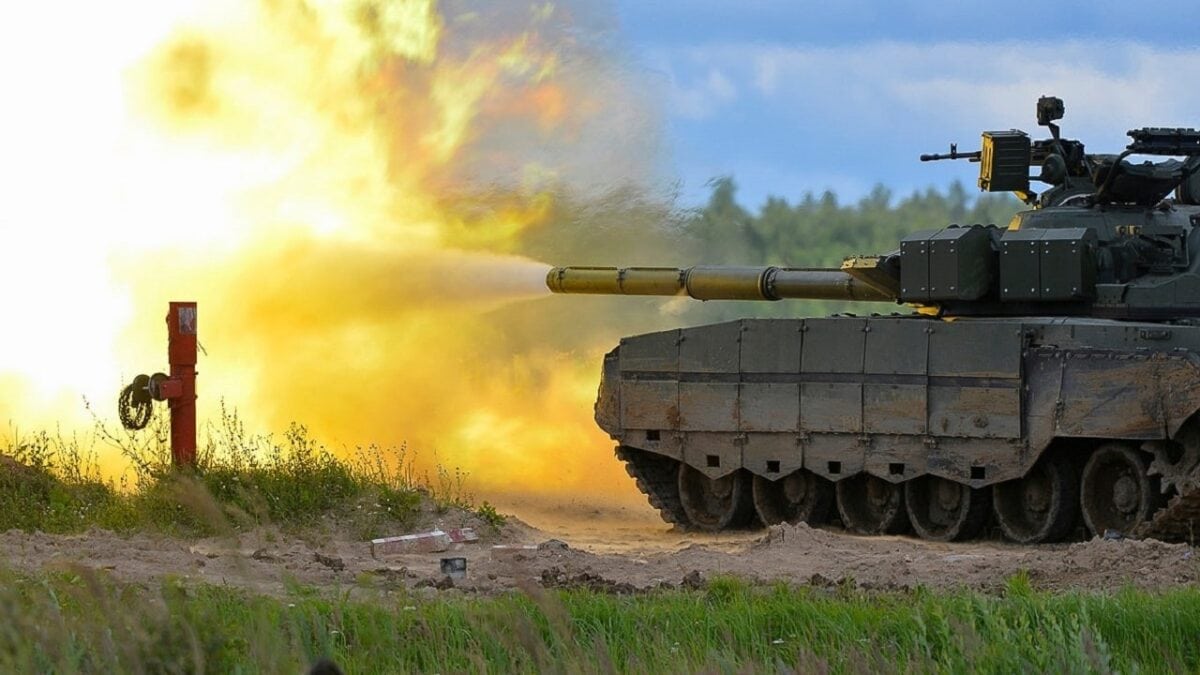The war in Ukraine, the first major conflict in Europe since the Second World War, is undoubtedly evoking memories of past wars. In the weeks leading up to the unprovoked invasion, Ukrainian civilians could be seen filling sandbags and building defensive positions in a way that wasn’t all too different from how the Soviet populace prepared for the German assaults during the Second World War.
Likewise, Ukrainians began to produce Molotov Cocktails – the gasoline bomb that earned its famous moniker during the Winter War between the Soviet Union and Finland.
Now there are reports that Ukrainians are using obsolete Soviet grenades as an anti-tank weapon – a tactic that was employed during both World Wars. In fact, it was just soon after the British Army deployed the first tanks on the Western Front in 1916 that ingenious Germans came up with an improvised anti-tank grenade that took the regular “potato masher” stick grenade and added two or three more high explosive heads to create a larger, yet still throwable, bomb.
In this case, the Ukrainians aren’t throwing the grenades, instead, they’re utilizing small octocopter drones to drop the explosive weapons on the top of a tank or other armored vehicle – typically where the armor is the thinnest. Among the antiquated grenades pressed into service is the Soviet-era RKG-3 (Ruchnaya Kumulyativnaya Granata or “Handheld Shaped Charge Grenade”). The Cold War grenades have been modified to include a 3D-printed tail fin and drogue parachute that helps stabilize their fall from the drones and ensures that the weapon hits the target fuse first.
Upon impact, the RKG-3 detonates a shaped charge that fires a hypersonic slug of copper with enough force to penetrate more than 20 centimeters of armor. Many of the Russian main battle tanks – including the T-72 and T-80, which have been deployed to Ukraine in large numbers – store ammunition within the turret, and the burst of superheated metal into the interior of the tank’s turret can often lead to a “catastrophic” explosion of the ammunition stored inside. This can lead to the “jack-in-the-box” effect where the turret is literally blown off the hull of the tank.
History of the RKG-3
The RKG-3 was developed by the Soviet Union after the Second World War and was first introduced in 1950. It is roughly the size and weight of a slender bottle of wine. As with most hand grenades, it was designed to be thrown by hand at an enemy armored vehicle. Even when it was introduced, the design flaw was noted. Unlike anti-tank rocket launchers, including the U.S. military’s “Bazooka” – the man-portable recoilless anti-tank rocket launcher weapon – which could be operated from distance, the grenades required a close, even near-suicidal, proximity to an enemy’s tank.

Russian tank firing main gun. Image Credit: Creative Commons.
While the RKG-3 has proven deadly against modern tanks, it simply has been widely employed as it requires the thrower to be so close to the enemy. After the introduction of anti-tank weapons, including the RPG-2 and later RPG-7, which entered service in the 1960s, anti-tank hand grenades were primarily considered obsolete.
Now by dropping the ordnance from a drone, the Ukrainian operator can stay at a safe distance and employ the old – yet still highly effective – grenades against Russian armor. Perhaps some in Moscow are cursing that the Soviets ever designed such an anti-tank weapon, but likely they didn’t expect ever actually to face it themselves.
Now a Senior Editor for 1945, Peter Suciu is a Michigan-based writer who has contributed to more than four dozen magazines, newspapers and websites. He regularly writes about military hardware, and is the author of several books on military headgear including A Gallery of Military Headdress, which is available on Amazon.com. Peter is also a Contributing Writer for Forbes.

